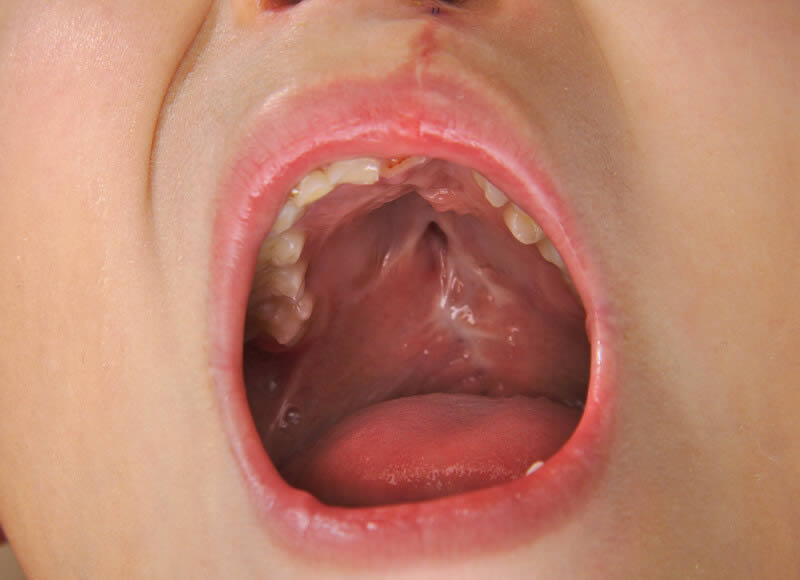When we think of dental care, we tend to focus on teeth, and the things that can go wrong with them – from cavities, to teeth that emerge twisted or out of place. While most of us know about dental bridges, crowns and braces to straighten teeth, obturators are something beyond our experience.
What is an obturator?
An obturator is a custom-made plate designed to close a gap between the roof of the mouth (palate) and the nasal cavity. Its primary function is to stop food and drink from entering the nasal passage.
Obturators are typically recommended for individuals with a cleft palate. But they are also useful for those with injuries or illnesses that have resulted in an opening in the palate.
Because it also prevents air from escaping through the nose, an obturator can help improve speech. People with cleft palate have a distinct nasal tone, and struggle to pronounce certain sounds.
How are obturators made?
Dr. Marius van der Walt, a volunteer dentist with Operation Smile, outlines the manufacturing process:
“First we take an impression of the patient’s upper jaw and create a plaster cast replica. Then a dental technician or dentist fashions the obturator out of a thin layer of acrylic over the plaster model. Stainless steel clasps and artificial teeth are added as required, before the acrylic is hardened with a special curing light. It’s then polished to make it smooth and comfortable to wear.”
Waiting for surgery
Ideally, children born with a cleft palate should receive surgery to repair the opening as early as possible. However, an obturator is a useful interim solution if there is a waiting period before surgery can be safely performed. It’s very important to have the device adjusted regularly by the dentist, as the upper jaw grows and permanent teeth replace baby teeth.
Children and adults with a cleft palate may also have a cleft lip and missing front teeth. Artificial denture teeth can be affixed to the obturator, enabling the patient to smile with confidence and chew more effectively.
Can a newborn baby be fitted with an obturator?
Babies born with a cleft palate or lip may find breastfeeding challenging. Because air escapes through these openings, it is difficult for the baby to create the seal necessary for effective milk suction.
In some cases, the baby may benefit from having a feeding plate (a type of obturator) fitted. It should be done as soon as possible following the birth, and adjusted regularly as the upper jaw grows. However, this is not the only solution. Some babies feed well when the mother expresses milk and feeds with a cup or specially designed bottle, in which case they don’t need a feeding plate.
Specialised obturators
Complete separation of the oral and nasal cavities is essential for clear speech pronunciation. Specialised speech prostheses and palatal lift appliances are available if the patient has specific speech-related issues – such as soft palate clefts or muscle dysfunction caused by nerve damage after a stroke or brain injury, or after soft palate surgery.
How much do obturators cost?
During Operation Smile surgical programmes, obturators are fabricated at no cost to the patient by the dentist who is part of the volunteer team.
In private practice, costs vary based on factors such as materials used, and the number of teeth and clasps added. You could be looking at anything from R3500 to R8500.
In the public sector, costs are influenced by the patient’s income and the resources of the particular facility involved.
What other dental interventions are commonly needed by children born with cleft conditions?
Cleft lip and palate conditions can significantly impact a child’s teeth. Front teeth may be misaligned or even missing completely. Orthodontic treatment and, in some cases, bone implants may be necessary.
Prompt treatment is important, in order to prevent low self-esteem and lack of confidence, especially as children reach the teenage years. Apart from psychological problems, badly aligned teeth can force a child to bite incorrectly, resulting in jaw pain and headaches. They may also grind their teeth at night, leading to tooth sensitivity.
Orthodontic treatments, such as fixed braces and removable orthodontic appliances, are commonly used to correct skew teeth. It is important for the child to visit the dentist from an early age; dentists are able to identify specific conditions that need immediate intervention even when baby teeth are still present. Maintaining optimal oral hygiene is essential.
Ongoing dental care is part of the holistic service offered by Operation Smile to children born with cleft conditions. We are extremely grateful to have the services of professional dentists like Dr Marius van der Walt, from Rob Ferreira Hospital in Mpumalanga, on our team of volunteers.
